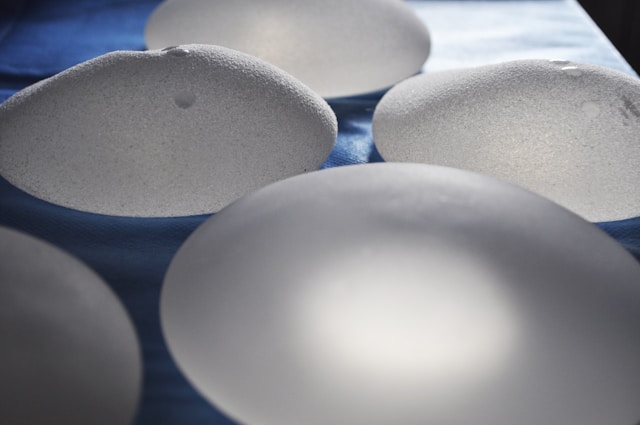
Breast implants are long-lasting, but they aren’t lifetime devices. Most augmentation, lift, and reconstruction patients enjoy natural-looking results for a decade or more before considering a change. Timing depends on the implant type, your anatomy, and how your breasts respond to life events like pregnancy, weight fluctuations, and aging.
Implant longevity starts with choosing an experienced surgeon and a procedure tailored to your anatomy. Board-certified plastic surgeon Dr. Andrew Lofman focuses on accurate sizing, thoughtful implant selection, and pocket placement that supports soft-tissue balance. After surgery, maintaining a stable weight, wearing supportive bras – especially when working out – and attending routine follow-ups preserve your results.
By working with Dr. Lofman, patients in Oakland County, MI, receive expert recommendations on when and how to replace their implants.
Why Aren’t Breast Implants Permanent?
Regardless of their filling, all implants have a silicone outer shell. Over time, wear and tear can affect the shell, and changes in your breast tissue may alter their shape, position, or feel. The FDA advises women that implants are not lifetime devices. The longer they remain in place, the more you risk experiencing complications such as rupture, capsular contracture, or aesthetic concerns.
Saline and silicone gel implants can last well over a decade. Saline implants offer immediate rupture awareness, while silicone implants often provide a more natural feel and reduce rippling in patients with thinner tissue. Factors like implant texture, cohesivity, size, and placement also influence longevity.
For silicone implants, the FDA recommends screening with ultrasound or MRI starting five to six years after placement and every two to three years thereafter to detect a silent rupture.
What Happens During Breast Implant Replacement?
Implant exchange involves removing your old implants and replacing them with new ones. Women choose this surgery for highly personal reasons. Some are medical and others are solely aesthetic.
- Rupture or deflation: Saline ruptures cause visible deflation and require prompt replacement. Silicone ruptures may go unnoticed and typically require imaging to confim.
- Capsular contracture: Scar tissue can tighten around the implant, causing firmness or distortion. Treatment may involve capsule removal and implant exchange.
- Position changes: Issues like bottoming out, lateral displacement, “double bubble,” or deformity can develop over time. Surgical adjustments and implant exchange can correct these.
- Aesthetic updates: You may choose to change your size, profile, or implant type to better match your lifestyle or cosmetic preferences. If you also want to improve your breast position, Dr. Lofman may recommend combining your breast revision surgery with a breast lift to elevate and restore projection for a balanced, youthful contour.
Dr. Lofman evaluates each case individually, considering breast tissue quality, skin elasticity, implant history, and personal goals to create a customized plan.
Can I Change Implant Size or Type During Replacement?
Implant exchange is the ideal time to refine size, projection, and feel. Some patients downsize for a lighter, athletic look, while others increase volume to restore post-pregnancy fullness. Switching between saline and silicone depends on tissue characteristics and personal preferences.
If your breast envelope has stretched or your nipples point downward, Dr. Lofman may recommend adding a lift to your customized surgical plan to position your breasts higher on your chest wall.
What Does Recovery Look Like After Implant Replacement?
Recovery varies based on the procedure’s complexity. A straightforward, 1-to1 exchange using the previous incisions and the same implant size and material typically involves minimal downtime, with most patients returning to desk work within a few days and gradually resuming activity over several weeks.
If you choose to include a lift or pocket revision, recovery may take longer and involve more specific activity restrictions. Swelling and upper-pole fullness will settle gradually as the implants adjust. Dr. Lofman’s team will provide you with specific instructions to follow, including when to wear your postsurgical support bra, how to care for your incisions, and a staged return-to-exercise schedule.
How Can I Get Personalized Guidance on Implant Replacement?
It all starts with a conversation. During your consultation, Dr. Lofman’s team will review your implant history, evaluate your breast tissue and skin quality, recommend imaging when you need it, and outline your options.
No matter what breast procedure you’re considering, Dr. Lofman offers experienced, compassionate care focused on natural aesthetics and long-term results. Schedule your consultation today to stay ahead of your implants’ lifespan, restore confidence, and plan for many beautiful years ahead.


